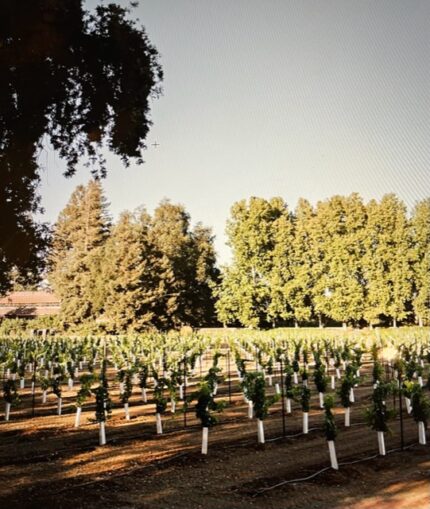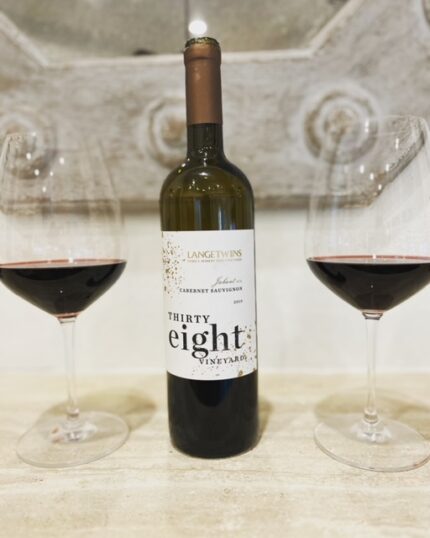The values of the LangeTwins Family Winery and Vineyards started in 1870 when the family’s German great-grandparents, Johann and Maria Lange, settled in Lodi and began farming non-irrigated watermelons. Even back then, there was a mission to be stewards of the land for future generations. Five generations later, there is a commitment to sustainable farming and business practices to improve the land, the business, and the lives of people.
I recently had the chance to talk to Marissa Lange, the president of LangeTwins Family Winery and Vineyards and part of the family’s fifth generation, about the winery’s history, purpose, and future direction. But first a little history.
Marissa’s Journey
She’s the oldest of five cousins and was the first to head to college at Brown University to get a degree in neuroscience. Back then, she knew she loved wine, but didn’t want to move back to Lodi or work in the industry. Then she saw another side of the wine industry and returned to California to study with Dr. Ann Noble, a sensory chemist at the University of California, Davis.
Her journey took her to work with Robert Mondavi and Beringer Blass Wine Estates and then at Treasury Wine Estates where her focus was Australian and New Zealand wines. When the family decided to expand from grape growing to making wine, she created the business model (her first one), was backed by lenders, and was soon named president.
The Winery’s History

In 1912, Albert Lange, Johann and Maria’s son, purchased a 40-acre vineyard in the Mokelumne River appellation of Lodi and began to grow grapes. Albert’s son, Harold, was born in 1920.
Harold had a set of identical twins, Brad and Randall Lange who started their partnership as a vineyard management company in 1973 when they purchased a small parcel of land from their father at the River Ranch, where they spent their childhood. The twins pushed the envelope by using technology like mechanical harvesting and committing to sustainable wine growing, an approach that considers the environmental, social, and economic impacts of wine production.
In 2006, the winery was founded. The fifth generation of the LangeTwins Family holds active leadership roles across the organization ranging from president to sustainability manager.
The winery is located on 7,000 net vine acres of family-owned vineyards in the Jahant AVA in Lodi. Marissa talked about being a farming family in the beginning, which helped them to understand the vineyard. David Akiyoshi and Karen Birmingham are the key members of the LangeTwins winemaking team.
The Story of Sustainability
The winery uses sustainable winegrowing practices and has been certified sustainable by The Lodi Rules for Sustainable Winegrowing since 2006. They were part of the original team of farmers, academics, and wineries who were part of the creation of Lodi Rules.
The winery actively uses drip irrigation and recycling to conserve water, practices no-till farming to improve soil quality, uses integrated pest management (IPM) to control pests and diseases, and efficient ways of using energy like solar panels.
Why is Sustainability so Important to the LangeTwins Winery?
Marissa talked about why sustainability is important. “We had values instilled early that we needed to take care of the land for future generations,” she said. “Growth, evolution, perspective, and knowledge of how we can do things better is important. After all, this is a collaboration of man and nature, and it takes humility to recognize and apply the changes needed for continuous learning.”
“We always look for the science and technology that will help us make a positive lasting impact while merging Old World techniques to make great wine. We are always looking for ways to use regenerative agriculture at a greater scale to make eventually become net positive.”
And she talked about what makes Lodi special. There are so many long-timers – or multi-generational farmers and wineries that have worked together since the beginning. This special group of people continues to be authentic to who they are and find ways to do things better to make the best wine possible.
She has great memories of growing up on the farm and the extraordinary bonds formed with her cousins as her playmates back then. “We were children in the vineyards,” she said. “The vineyards were our playground and imagination took hold.”
The Vineyards and the Wine
The family farms thirty-two varieties across seventy-five vineyards. There are four brands: LangeTwins, Sand Point, Ivory & Burt and Caricature. LangeTwins Family Winery and Vineyards produce a variety of wines, including Cabernet Sauvignon, Zinfandel, Chardonnay, and Sauvignon Blanc, which are sold in 26 states and in over 11 countries.
The LangeTwins Wines


I had the opportunity to try two sample wines.
2022 LangeTwins Family Chenin Blanc (Merrill Vineyard) – I really enjoyed the freshness of this lovely white wine. I tasted notes of nectarine, apple, citrus and a touch of honey.
2019 LangeTwins Cabernet Sauvignon (38 Vineyard)– this 40-year-old vineyard produced a balanced and rich cabernet that was drinkable today. It had notes of black cherry, cassis, mocha, spice, cigar, and vanilla.
I loved a quote I saw on the website:
“Each day we wake up knowing that everything we do, we do for the love of farm and family.”
In looking back on the history, this was a winery built in celebration of the vineyards and cultivating to last for future generations.



